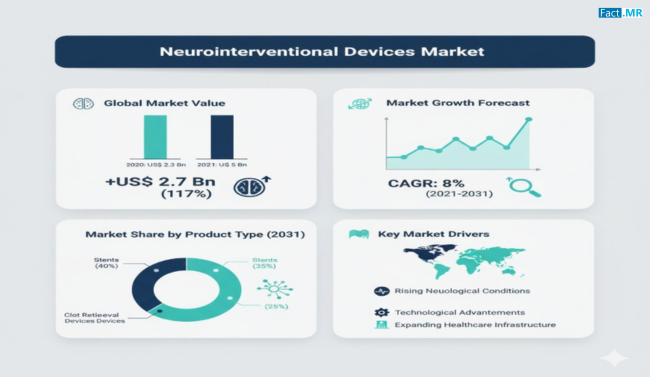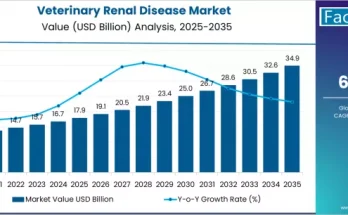Neurological disorders such as brain aneurysms, strokes, and vascular malformations are major health concerns worldwide. Neurointerventional devices, designed for minimally invasive procedures, have revolutionized the treatment of these conditions. By enabling precise interventions with reduced recovery times, these devices play a crucial role in improving patient outcomes. The neurointerventional devices market is expanding rapidly as hospitals and surgical centers adopt advanced technologies to meet growing demands for safe and effective neurological treatments.
Market Overview:
Neurointerventional devices include embolic coils, neurovascular thrombectomy devices, carotid stents, flow diverters, stent retrievers, and other specialized instruments. These devices are essential for procedures such as coiling, stenting, cerebral angiography, and thrombectomy. The market is driven by increasing prevalence of neurological disorders, rising geriatric populations, and growing awareness of minimally invasive treatment options. Advancements in device design and technology are further enhancing procedural efficiency and safety.
Regional Insights:
North America leads in the adoption of neurointerventional devices, owing to advanced healthcare infrastructure, high technological penetration, and the presence of major market players. Europe follows closely, supported by robust healthcare systems and growing awareness of neurovascular diseases. Asia-Pacific is emerging as a significant growth market, driven by expanding healthcare facilities, increasing prevalence of neurological disorders, and a rising elderly population. Latin America and the Middle East & Africa are also witnessing steady growth, fueled by rising healthcare investment and technological adoption.
Key Trends & Forecast:
- Minimally Invasive Procedures:There is a strong shift toward less invasive neurointerventional procedures, which reduce patient recovery time and procedural risks.
- Technological Innovations:Continuous R&D is producing advanced devices, such as detachable coils and improved stent systems, enhancing procedural precision.
- Rising Prevalence of Neurological Disorders:Increasing cases of strokes, brain aneurysms, and vascular malformations are driving demand for effective neurointerventional solutions.
- Geriatric Population Growth:An aging population contributes to higher incidence of neurovascular disorders, expanding the target patient pool.
Applications & End-Use Outlook:
Neurointerventional devices are widely used in hospitals and ambulatory surgical centers. Hospitals are the primary adopters due to their capacity to perform complex neurological procedures. Devices such as embolic coils and thrombectomy systems are essential for treating aneurysms and ischemic strokes. Cerebral angiography devices are used for diagnosis and treatment planning, while flow diverters and stent retrievers help manage intricate vascular abnormalities. The growing focus on minimally invasive interventions is driving adoption in surgical centers and specialized neurological clinics.
Impact of COVID-19:
The COVID-19 pandemic temporarily disrupted healthcare services but highlighted the need for efficient neurological care. Post-pandemic, there has been an increased focus on minimally invasive procedures, leading to higher demand for neurointerventional devices. Clinics and hospitals are investing in advanced devices to improve patient outcomes while maintaining safety and operational efficiency.
Competitive Landscape:
The neurointerventional devices market is highly competitive. Key players focus on product innovation, regulatory compliance, and clinical support. Companies are introducing advanced devices, such as detachable coils and precision stents, while reducing costs to improve accessibility. Collaborations with healthcare providers and targeted R&D efforts are critical to gaining a competitive edge. Additionally, emerging players are introducing innovative devices that expand procedural capabilities and improve patient outcomes.
Challenges & Market Restraints:
High device costs and limited access to trained neurointerventional specialists can restrict adoption in certain regions. Stringent regulatory requirements and the complexity of procedures may also pose challenges. Continuous training and adherence to safety protocols are essential to maximize the effectiveness of neurointerventional devices.
Conclusion:
The neurointerventional devices market is central to modern neurological care, offering minimally invasive solutions that improve patient safety and outcomes. With rising neurological disorder prevalence, increasing geriatric populations, and technological advancements, the market is poised for sustained growth. Understanding emerging trends, regional dynamics, and innovations is essential for manufacturers, healthcare providers, and stakeholders aiming to advance neurological treatment and improve patient quality of life.
Browse Full Report – https://www.factmr.com/report/134/neurointerventional-devices-market



